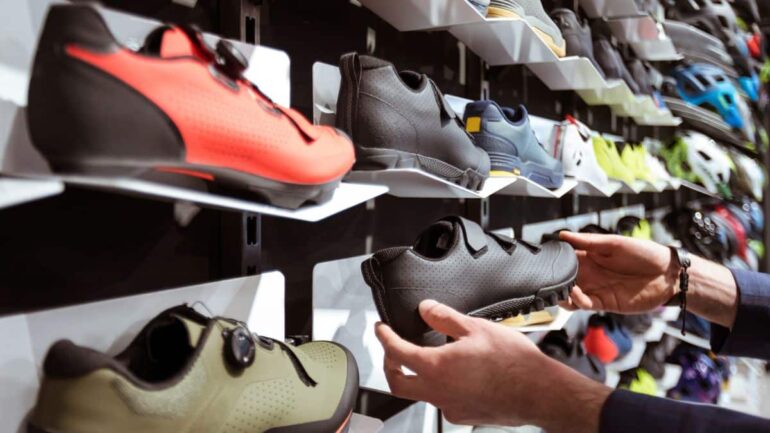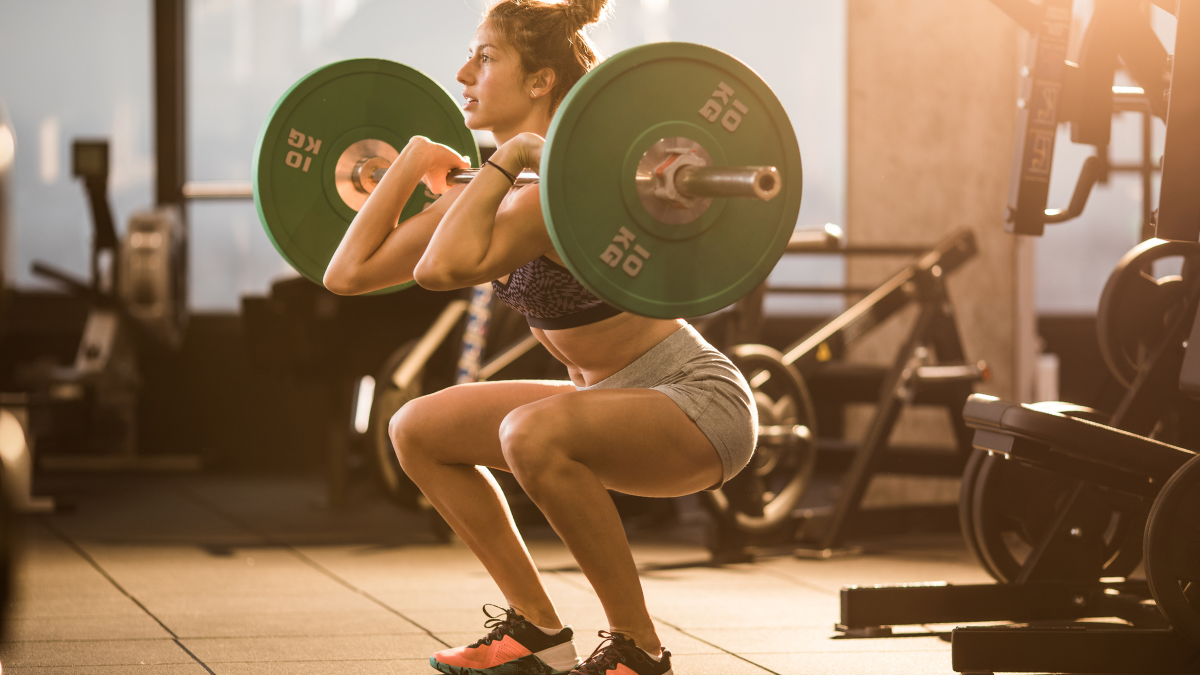So you’ve had a bike fit, your shoes feel great, but you’ve bought a shiny new pair… how do you set up the cleats so the new shoes feel just as good (if not better!) than your current kicks?
This is a question we get asked all the time by our riders, so we thought it was time to share some of the common advice we give out. The ultimate goal for us is always to provide riders with knowledge, so that they can take ownership of their fit, position and performance. You more you know, the better decisions you can make and be more confident about your setup. Right, let’s dive in…

Hopefully, before you’ve even got to this stage, you’ve spent some good time researching and trying on shoes before committing to a new set. Once you’ve mounted cleats and ridden the shoes you can’t take them back!
It’s worth spending the time trying on as many pairs of different shoes as you can before buying. This is the only way to know what feels / fits best for you. Don’t be that rider who boasts they got a ‘great bargain’ online only to realise that the shoes don’t fit!
The 3 Cleat Variables
These are the 3 things you need to get right when setting up your new cleats:
- Cleat position fore-aft (how far forward or back the cleat is positioned).
- Cleat position lateral-medial (sideways position of the cleat
- Cleat rotation (how much the cleat is angled to the midline of the shoe)
So, for each of the methods we’ll walk you through how you would determine each of the 3 variables.

ASSUMPTION: Before you read through the first two methods, we are assuming that you want to replicate an existing cleat position and you are happy with this position. If not, scroll down to Method 3, which is essentially a guide for setting your cleats up from scratch.
Method 1: The Quickie – Heel On Floor Comparison
This is the quickest, and easiest, but LEAST accurate way of comparing a cleat setup.
This also works best if you are installing the SAME cleats on your new shoes as you have on your old shoes. If you are installing new cleats and a new pedal system use Method 3 below.
- Install the cleats loosely on your new shoes.
- Grab one of your old shoes with the cleat installed + the opposite foot of the new shoe with the cleat installed.
To set the fore-aft position of the cleat:
- Turn both shoes vertically and place the heel of both shoes onto a firm, flat surface.
- Turn the shoes so the cleats face toward each other.
- Compare and move the cleat on the new shoe so it is in line with the cleat on the old shoe. (see image for reference).

To set the side-side position of the cleat:
- Keep the shoes stacked on top of each other (cleats touching), look from the rear and front of the shoe and eyeball the shoe positions relative to each other – does one shoe look like it’s positioned more over to one side than the other? If so, move the cleat again so the shoes are aligned.



To set the rotation of the cleat:
- Again keep the shoes stacked on top of each other, cleats touching and aligned – do the heels of each shoe align with each other? Adjust rotation till the heels align.
Method 2: Using A Tool
The best tools are often the simplest, our favourite is the Ergon Cleat Tool. It’s cheap (£24), simple and readily available, you should be able to find one through a local bike shop or online retailer. Other more fiddly tools are available but they’re really most useful for fitters who are changing cleats on a daily basis such as the Cleat Key (only really useful for angle adjustment) and this ridiculous machine with lasers from Selle Italia (Got £400 to burn?!?)

@ Ergonbike
Before you use the Ergon tool, bear in mind this only works if you are installing the SAME cleats on your new shoes as you have on your old shoes. If you are installing new cleats and a new pedal system use Method 3 below.
- Install the cleats loosely on your new shoes.
- Grab one of your old shoes with the cleat installed + the opposite foot of your new shoe with the cleat installed.
- Place each shoe into the cleat outlines so they are side-by-side, as pictured below.
- Use the tool to compare the positions and adjust the fore-aft, side-side and rotation so both shoes are matching. Easy!
- Ergon even has a video to give you a bit more guidance if needed.

Method 3: Using Your Foot Landmarks
If you are unsure about your cleat position and want to set them up entirely from scratch I recommend using Steve Hoggs methods. These are the same methods we use in the studio during our fits and his explanations are very detailed so I won’t waste time by replicating them here.
If you are happy with your cleat position on your existing shoes, and want to replicate it on your new shoes then follow the steps below. This is the most accurate method and will get much better results than the other methods.
- Our aim is to locate your first metatarsal joint (or the ball of your foot) and use this as a consistent landmark on your foot which we can reference to set your cleat position.



- This is the most accurate method because your foot may sit in a different position in different shoes. Every shoe has a different internal shape and will affect where your foot is placed.
- Firstly put on your old shoes, place a piece of masking tape over the area where the ball of your foot is.
- To locate the middle of your first metatarsal joint, flex your toes up and down inside the shoes. You should be able to feel this bony part of your foot moving. Use a couple of fingers to pinch around the joint to get an idea of how big it is.
- Locate the middle of the joint – this is usually the most protruding part, or the gap between the two bones as they move against each other.
- Mark this point on the masking tape with a pen.
- Repeat the same process on the new shoes and mark the first metatarsal positions.

- Now mark off on your old shoes, on the masking tape, where the centre of the cleat is and note the distance this is behind the mark for the first metatarsal joint. (Shimano and Look cleats have a notch on the side of the cleats to indicate the centre point. The mid point of the Speedplay pedal is easier to find since it’s a more symmetrical cleat, but they also have a line to indicate the centre point).
- Now set the cleat fore-aft position on the new shoes at the same distance behind the first metatarsal joint on the old shoes. You could also use the Ergon Cleat Tool to help with this if you are using the same cleats across both shoes.
- Use the Ergon Cleat Tool or the other methods outlined above to set cleat rotation and lateral-medial positioning.

@ RCUK
Things To Be Aware Of:
- Once you have your cleats set up on your new shoes, go out for a gentle spin and see how they feel. If you’re feeling good, put in a bit more effort to see if anything feels different under load. Adjust the cleat position as needed.
- New shoes will always feel different. Different shoes have different shapes, retention systems, toe spring, heel cups, volume, width, sole stiffness etc. So you may need to adjust the cleat position AND seat position to suit. e.g. if a shoe has a lower stack height then you might need to lower your saddle a smidge.
- NOTE: the threaded holes for mounting your cleats onto the shoes may be in a different position on different shoes! E.g. Fizik shoes quite often have a very forward cleat hole drilling which means you often can’t achieve the optimal cleat fore-aft position without using an adaptor plate (be wary of these shoes!). Shimano on the other hand offer huge amounts of adjustment since their holes are mounted on a sliding plate.
We hope you found this guide useful and it brings many comfortable miles!
If you have any questions at all, please do send us an email: info@foundation.fit
Remember if you’re an existing customer, and your struggling to find that sweet spot with your new shoes, you only need to book in for a follow-up session and we’re sort you out!





You must be logged in to post a comment.